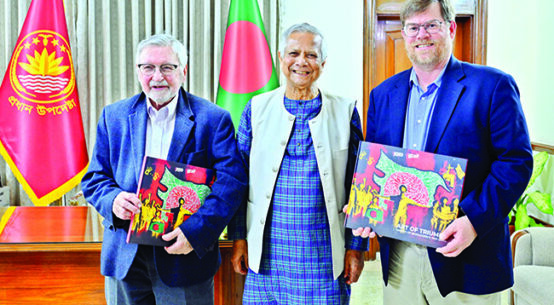State hydrocarbons agency Petrobangla’s is close to receiving the nod from the very top, to invite a round of international bidding for the country’s offshore gas blocks based on its new model production sharing contract int’l bidding within the current year.
A proposal in this regard was recently sent to the Prime Minister’s Office (PMO) for its approval to proceed, UNB understands from its sources.
“We’ve received initial approval from the Energy and Mineral Resources Division and then, as the next step, it was forwarded to the PMO as Prime Minister is the in-charge of the ministry,” said a top official of Petrobangla, preferring not to be named in discussing the sensitive issue.
He said after the PM’s approval, it would be placed in the Cabinet Committee on Economic Affairs (CCEA) for the very final approval, as it acts as the highest policymaking body. Since the PM heads the CCEA, that should be a formality once it passes her desk.
Then Petrobangla will be free to move towards inviting the international bidding round, he noted.
Earlier, Petrobangla updated its Model PSC, to make it more attractive for international oil companies (IOCs) to explore for oil and gas in the country’s maritime areas in the Bay of Bengal.
In the new Model PSC, the gas price will be offered at 10 percent of Brent Crude, the most traded of all the oil and gas benchmarks. It means if Brent is being traded at $75 per barrel, the price at which the government would buy any gas the company is able to produce at $7.5 per thousand cubic feet (MCF).
“The gas price will always remain linked with the international oil price,” said the official, referring to the new provision in the ‘Model PSC 2023’.
There will also be no difference between the price of gas in shallow or deep water blocks, he said. This is another change from the previous PSC.
“If the oil price goes down or up, the gas price will follow it rationally and Bangladesh will purchase the gas from the IOCs at this rate,” said the official.
Under a Model PSC, normally, if any IOC discovers gas, it gets a 40 percent stake while the government obtains the remaining 60 percent.
The government also buys the IOC’s gas at a certain price. So if the gas price is raised, IOCs feel encouraged to invest in exploration works.
The government had last amended the Model PSC in mid-2019, whereby the price of gas for any participating IOC, that is, the price at which they would sell the gas to the government, was set at $5.5 per MCF for shallow water blocks, and $7.25 per MCF for gas extracted from deep sea blocks.
Scottish consultancy firm Wood Mackenzie was appointed last year to update the Model PSC – specifically, to make it more attractive to IOCs.
Petrobangla chairman Zanendra Nath Sarker recently said the organisation forwarded its proposal to the Energy and Mineral Resources Division for approval with a plan to go for international bidding by July or August this year.
Officials said previously many IOCs were reluctant to participate in the bidding of the exploration due to the low price offered by Bangladesh.
Official sources said the recent excessive hikes in petroleum fuel price, especially that of liquefied natural gas (LNG), prompted the government to go for further amending the existing PSC so that the IOCs get interested to invest here.
The country has a total of 48 blocks of which 26 are located offshore and 22 onshore. Of the 26 offshore blocks, 11 are located in shallow sea (SS) water while 15 are located in deep sea (DS) water areas.
Of these, 24 offshore gas blocks remain open for IOCs while two blocks -SS-04 and SS-09-are under contract with a joint venture of ONGC Videsh Ltd and Oil India Ltd where drilling works have recently started.
Bangladesh’s offshore area remains largely unexplored, especially its deep sea (DS) blocks, despite the settlement of its dispute with neighbouring Myanmar and India over the maritime boundary almost nine years ago. Currently, about 2300 mmcfd gas is being produced from 22 gas fields in the country, while about 700 mmcfd gas is being imported from abroad to meet the demand of about 4000 mmcfd, leaving a deficit of about 1000 mmcfd daily.


